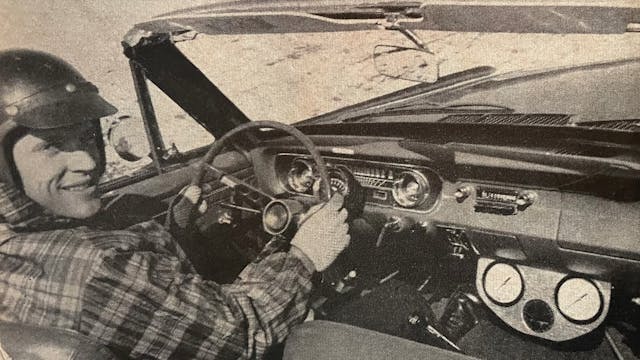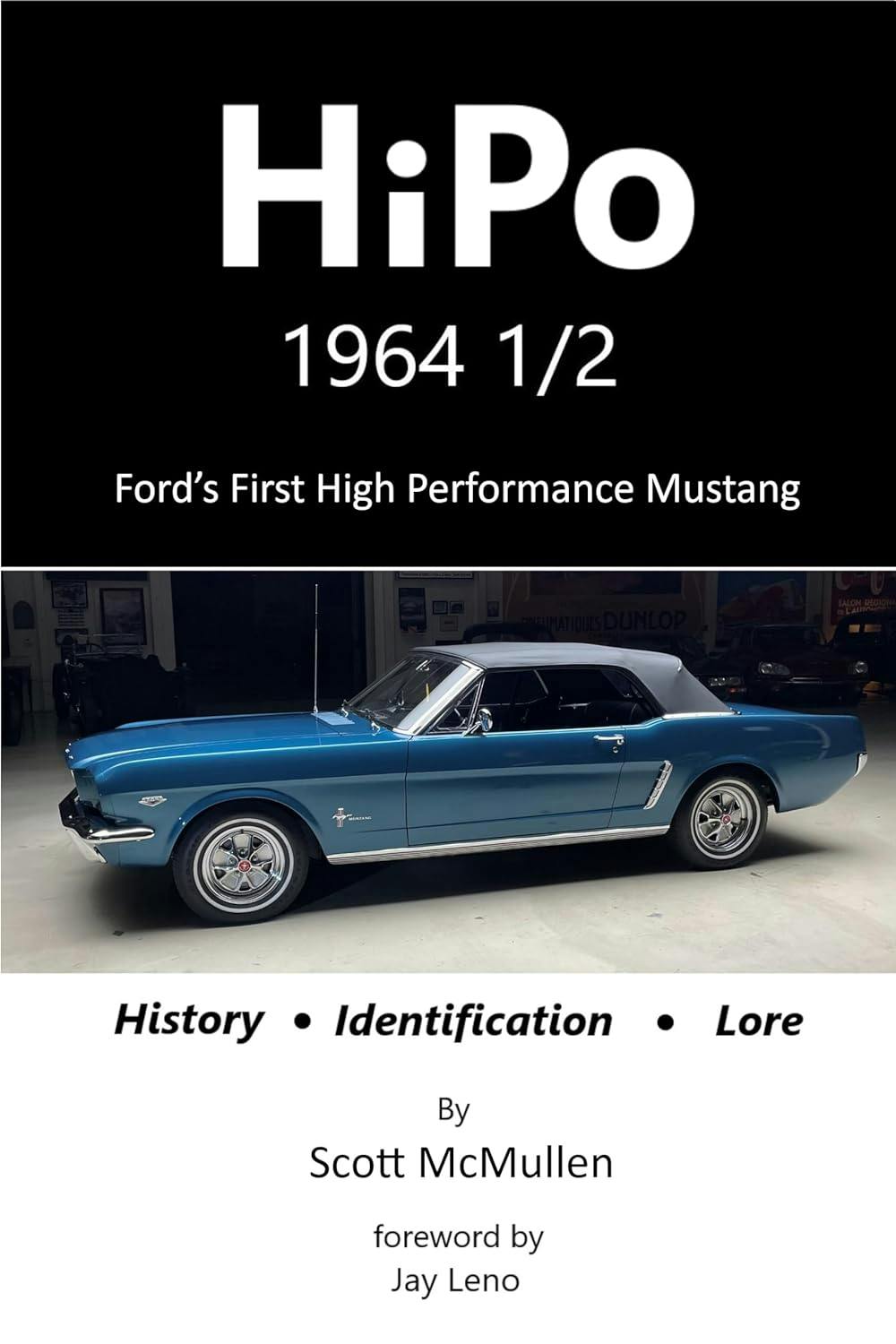Book Review: HiPo 1964.5 Ford’s First High Performance Mustang
April 17 marked 60 years since the Ford Mustang’s public debut at the 1964 New York World’s Fair. The original pony car immediately became a pop-culture and automotive phenom, and it remains one of the most impactful cars in history. We’re celebrating with stories of the events surrounding the Mustang’s launch, the history of the early cars, and tales from owners. Click here to follow along with our multi-week 60 Years of Mustang coverage. -Ed.
Any great piece of automotive literature should make you want to go out and buy whatever you’re reading about. Even if your desire only goes as far as searching the local classifieds, the book should at least inspire a greater interest and appreciation for the subject. Scott McMullen’s book about the rare HiPo 1964 ½ Ford Mustang (K-code) does exactly that.
This is not a coffee table book with big glossy photos. Instead, it reads like a hardback novel that tells the story of why the HiPo (289-cubic inch V-8 rated at 271 hp) Ford Mustangs built in mid-1964 are worth a closer look. Inside, you’ll find black and white photos of cars being built in the factory, close-up color photos of parts that differentiate the 1964 ½ HiPo cars from the other 1964 ½ V-8 Mustangs and regular production 1965s, and an appendix with tables that detail changes in the air cleaners, carbs, exterior colors, and trim combinations.

Scott McMullen’s background as an engineer in research and development means he takes a reassuring, evidence-based approach to understanding these early HiPo Mustangs. His experience restoring cars and examining original cars further helps him explain how Ford’s rush to get Mustangs to market meant there were some variations in the cars built. Preserving those original variations of early K code Mustangs is one of the book’s aims. While maintaining originality is especially challenging when restoring a Mustang, it is an increasingly appreciated and important goal in the collector car world.

Looking at factory photos, understanding date codes, part and engineering numbers, production line notation, and referencing sources like Ford’s Rouge News help untangle the story of why so few HiPo Mustangs were built initially and what makes them different. With 680,989 Mustangs built for the 1965 model year, it is easy to lose sight of the 1964 ½ HiPo cars with all the others. While some people might still agree with the phrase “Mustangs will never be collectible because they built too many,” this book shows why some Mustangs are collectible by even the most stringent of parameters when you look closely.
Once you’re done reading this book, if you can’t find a 1964 ½ HiPo Mustang nearby, you can sate your appetite by watching the segment on Jay Leno’s Garage featuring Scott McMullen and a Guardsman Blue 1964 ½ HiPo convertible. Jay also wrote the foreword for the book, so if it is good enough for Jay, it is good enough for you.
***
Check out the Hagerty Media homepage so you don’t miss a single story, or better yet, bookmark it. To get our best stories delivered right to your inbox, subscribe to our newsletters.



Many years ago , too many , I traded a 289 Le Mans cam to a friend for…I forget what. We traded parts back and forth so much it was impossible to keep track. He had a 66 Mustang GT fastback. 289 4 bbl, 4 speed. Pulled the engine after a few months and dropped in a 302. Put the original engine on a stand and set about ‘ HiPo-ing plus after taking care of the body work and. That original factory Ford Le Mans cam was still fresh in the tube. When push came to shove he used a similar/identical aftermarket grind instead. Seemed almost sacrilegious to use it after all those years. I saw Leno on Mecum not so many years ago. They said -” You must have a number of Mustangs?” -or something like that . He said- ” No, I only have a 65 GT-350.”- Granted that is the year to have but the foreward ? Hmmm?